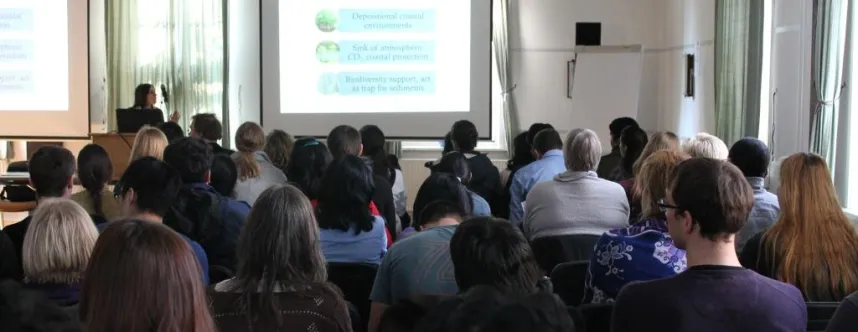MoLife Research Seminar: Dr. Carsten Marr
MoLife Research Seminar by:
Dr. Carsten Marr, Institute of Computational Biology, Helmholtz Zentrum München, Germany
Title of the talk:
Quantifying cellular dynamics of stem cell decisions
Abstract:
Time-lapse microscopy is a powerful method to continuously monitor single cells. Combined with appropriate markers, it allows for the time-resolved observation of protein expression. Such information is necessary to characterize state transitions, differentiation dynamics and gene expression models. However, to infer regulatory events or spatiotemporal effects robustly, bioimage informatics and tailored analysis methods are required. In my talk, I will discuss tools and algorithms to quantify single cell dynamics in time-lapse microscopy data from blood and embryonic stem cells.
In the first part, I will present two bioimage informatics tools for the processing of time-lapse data. Uneven illumination and variable background levels in microscopy images affect subsequent analysis but can be corrected with a computational method based on low rank and sparse decomposition. Single-cell information can be retrieved from images using tracking, segmentation and quantification. Our tools generate lineage trees that contain genealogical information but also the dynamics about morphological changes, cell speed, and expression of marked proteins.
In the second part of my talk, I will present statistical models to infer cellular properties from single-cell data. In lineage trees of differentiating blood stem cells, we often observe correlated state changes between related cells. These correlations could originate from cells sharing e.g. similar local cell densities. To account for such spatio temporal context, we developed a method that recovers predictive spatio temporal features. In the absence of such features, stem cell decisions may happen before the observed state change, inducing correlations in sister cells. Using these correlations and a stochastic model of the differentiation process, we find differentiation events to happen much earlier than anticipated. To predict differentiation prospectively, we use a deep neural network trained on image patches from brightfield microscopy and cellular movement. Surprisingly, we can detect lineage choice in blood stem cells up to three generations before conventional molecular lineage markers are observable. Finally, I will present a method for fitting stochastic models to lineage trees. Using a Bayesian inference method, we compare possible models of Nanog autoregulation, an important gene regulatory motif in embryonic stem cells. We identify negative feedback as a likely mode of Nanog regulation and verify this using a novel fluorescence dataset.
Further information by:
Prof. Dr. Marc-Thorsten Hütt, Professor of Computational Systems Biology (Focus Area: Health - Life Sciences & Chemistry) Email: m.huett@jacobs-university.de - Link to Homepage: http://sysbio.jacobs-university.de/website/
